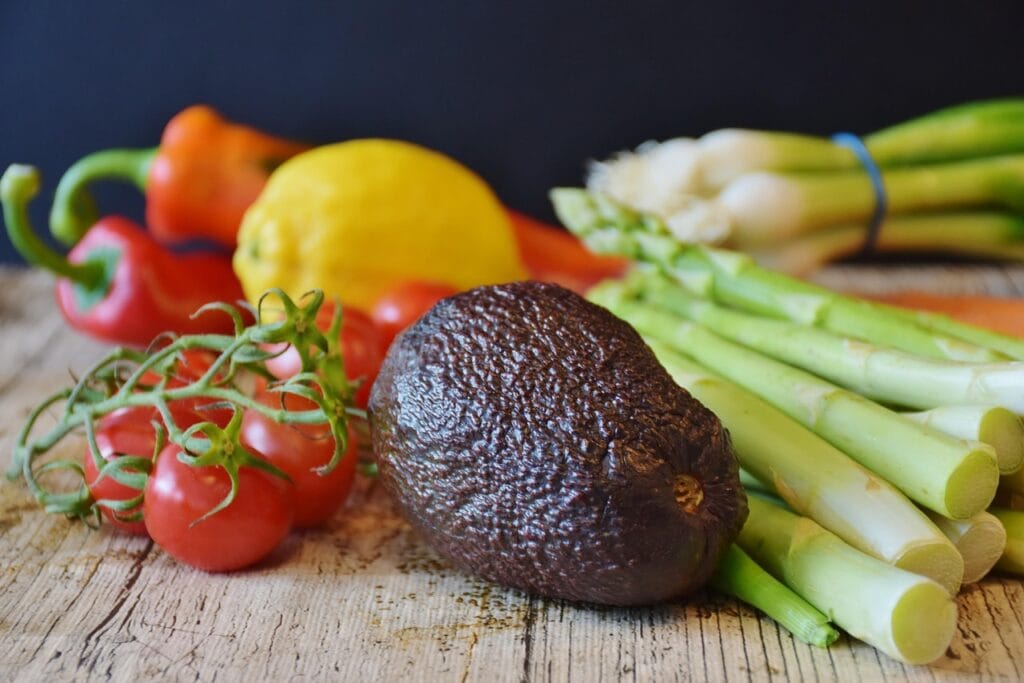Magnesium Biohacks: Daily Routines and Foods to Better Your Sleep Patterns, Mood and Energy
Magnesium quietly powers over 300 vital functions in your body, from how well you sleep to how calm you feel to how deeply you recover after stress. We curated a few Biohacks for your magnesium rich daily routines and foods to better your sleep patterns, mood and energy

You used to thrive on pressure. Challenges sharpened your thinking, and the chaos of back-to-back meetings, high-stakes decisions, and long days gave you a kind of edge. You were known for being unshakeable. The one who could handle anything. But something’s changed. You are tired of feeling tired.
You’re juggling a thousand things, work deadlines, family life, social obligations, the mental to-do list that never ends. You collapse into bed each night hoping for deep, restful sleep, only to wake up feeling just as drained as the day before. Your mood swings between “I’ve got this” and “I can’t do this,” and the tiniest stressor sends your nervous system into overdrive.
The secret might not lie in another coffee run or a new skincare routine, but in something much simpler, quieter, and more essential: magnesium. This mineral doesn’t get flashy headlines, but it quietly powers over 300 vital functions in your body, from how well you sleep to how calm you feel to how deeply you recover after stress. And yet, most women are unknowingly deficient, running on empty, trying to do life without enough fuel.
Let’s start making magnesium work for you, one daily ritual at a time.
Are You Getting Enough Magnesium?
The recommended daily intake of magnesium for adult women, as advised by health organizations, falls within the range of 310 to 320 milligrams. This specific amount can vary slightly depending on factors such as age, pregnancy and breastfeeding. However, a concerning issue affects a considerable number of women: there isn’t sufficient magnesium solely through their dietary intake. This deficiency can be attributed to a confluence of factors prevalent in modern society.
Signs of Magnesium Deficiency:
Contemporary agricultural practices, which often prioritize high yields and rapid growth, can lead to soil depletion and, consequently, crops with lower magnesium content. Additionally, the widespread consumption of processed foods, which are frequently stripped of essential nutrients during manufacturing, further exacerbates the problem. Moreover, chronic stress, a pervasive issue in today’s fast-paced world, has been shown to deplete magnesium levels in the body.
Given these challenges, it is imperative to be mindful of magnesium intake and consider consulting a healthcare professional for personalized guidance on appropriate magnesium supplementation, ensuring that your individual needs are met and potential health risks are minimized.
- Muscle cramps or twitches
- Trouble sleeping
- Anxiety or low mood
- Fatigue
- Irregular heartbeat
- Headaches or migraines
Why Magnesium Matters More Than You Think
Magnesium is essential for just about every cell in your body. It helps maintain normal nerve and muscle function, keeps your heart rhythm steady, supports a healthy immune system, and even helps regulate blood sugar levels. But for women, magnesium takes on an even more profound role.
Hormone Balance
Magnesium is deeply connected to the female hormonal cycle. It helps regulate cortisol (your stress hormone), supports healthy estrogen and progesterone levels, and can reduce symptoms of PMS, including bloating, irritability, and cramps. For women going through perimenopause or menopause, magnesium can also help with hot flashes, sleep disturbances, and mood swings.
Mood & Mental Health
Ever feel anxious, restless, or just on edge? Low magnesium might be a contributor. Magnesium supports the production of neurotransmitters like serotonin and dopamine—your brain’s natural mood stabilizers. Studies have shown that magnesium supplementation may help reduce symptoms of anxiety and mild to moderate depression, particularly in women under chronic stress.
Bone Health
While calcium usually gets the spotlight for bone strength, magnesium is just as critical. It helps with calcium absorption and plays a role in bone formation. Low magnesium levels have been linked to osteoporosis and an increased risk of fractures, making it a must-have nutrient for women of all ages, especially postmenopausal women.
Heart Health
Magnesium helps regulate blood pressure and maintain a steady heartbeat, both of which are key for long-term cardiovascular health. For women, especially as they age and estrogen levels drop, magnesium becomes increasingly important in protecting against heart disease.
Daily Rituals
Magnesium Rich Meal- Magnesium plays a quiet but powerful role in calming your nervous system, regulating cortisol levels, and gently preparing your mind and muscles for rest. A warm, nourishing dinner built around foods rich in magnesium—such as black beans, quinoa, leafy greens like Swiss chard or kale, and creamy avocado—grounds your body in comfort and balance.
Magnesium-Rich Herbs and Seeds That Gently Nourish Your Body– Adding herbs and seeds to your meals is a subtle but powerful way to boost your magnesium intake throughout the day. Nature offers a generous variety of these nutrient-rich plants that quietly support your nervous system, balance your mood, and promote better sleep.
- Agar seaweed brings a mineral-rich essence to soups and broths.
- Coriander, dill weed, and celery seed infuse your dishes with fresh, earthy complexity, while also providing trace amounts of magnesium.
- Sage and dried mustard, often overlooked, are grounding additions to roasted vegetables or whole grains.
- Basil and fennel seed can lift the simplest dish, while savory, cumin seed, and tarragon bring depth and warmth to both plant-based and traditional recipes.
- Marjoram, poppy seed, and other delicate herbs offer calming properties that soothe digestion and gently ease the mind.
Each of these herbs and seeds is a whisper of nourishment—tiny additions that, over time, help restore your body’s natural rhythm, without the need for anything synthetic.
Magnesium Rich Tea– Sipping a gentle herbal tea like chamomile, Nettle chamomile and dandelion root tea allow your digestion to settle and your mind to soften. Choosing drinks a signal to your whole system that it’s safe to relax. You’ll likely notice better digestion, fewer blood sugar spikes and a smoother, more peaceful transition into rest.
Magnesium Mineralised Water- There is advanced filtration technology offering fresh, magnesium-enriched tap water anytime. It’s a simple, effortless way to nourish your body throughout the day without altering the taste.
Soothing Bath– After a long day or an intense workout, your body craves a moment to reset. As part of your evening wind-down, create a ritual around a soothing bath infused with Epsom salts. As you soak, your muscles begin to release the tightness they’ve been holding all day, and a quiet stillness settles in. You might notice your thoughts begin to slow, your circulation improve, and the usual aches soften into silence. What begins as a simple act of care becomes a powerful way to reconnect with your body’s need for rest and restoration.
Wind-down rituals– Magnesium helps regulate melatonin production and calms your brain. Pair your magnesium rich diet with a wind-down ritual: no screens, herbal tea, dim lights, gentle stretches, or journaling. You will experience deeper sleep, fewer night wake-ups, and waking up feeling actually refreshed.
Foods Rich in Magnesium
Nature has fortunately offers us an abundance of magnesium-rich foods that can effortlessly be incorporated into our daily diets. Leafy green vegetables like spinach and Swiss chard are nutritional powerhouses, boasting high levels of magnesium alongside other essential vitamins and minerals. Nuts and seeds, particularly almonds, cashews, and pumpkin seeds, offer a convenient and magnesium-rich snack option, while legumes such as black beans and lentils provide a hearty dose of magnesium and fiber.
Whole grains like brown rice and quinoa can serve as a magnesium-rich base for meals, and avocados add a creamy texture and a boost of magnesium to salads and sandwiches. And for those with a sweet tooth, dark chocolate with a high cocoa content can satisfy cravings while providing a surprising amount of magnesium. Some of the best magnesium-rich foods include:
Dark Leafy Greens
Dark leafy greens are nutritional powerhouses, and incorporating them into your diet can offer a wide array of health benefits.
- Consider adding spinach to your salads, smoothies, or omelets for a boost of iron and vitamins.
- Swiss chard, with its vibrant stalks and earthy flavor, can be sautéed, steamed, or added to soups and stews.
- Other excellent options include kale, collard greens and mustard greens, each with its unique flavor profile and nutrient density. Remember to wash your greens thoroughly before consuming them and explore various cooking methods to find your favorites.
Nuts and Seeds
Nuts and seeds (especially almonds, cashews, pumpkin seeds)
Nuts and seeds are nutritional powerhouses, offering a wide array of health benefits.
- Almonds, for instance, are rich in vitamin E, magnesium, and fiber, promoting heart health and aiding in blood sugar control.
- Cashews provide a good source of protein and healthy fats, contributing to satiety and supporting brain function.
- Pumpkin seeds, packed with zinc and antioxidants, boost immunity and may improve prostate health. Incorporating a variety of nuts and seeds into your diet can enhance overall well-being and provide essential nutrients.
Vegetables
- Black beans: A staple in many cuisines, especially Latin American and Caribbean, black beans are packed with protein, fiber, and antioxidants. They have a rich, earthy flavor and a creamy texture, making them perfect for soups, stews, dips, and salads.
- Lentils: These small, lens-shaped legumes come in a variety of colors, each with its own unique flavor and texture. They are quick-cooking and versatile, making them a popular choice for weeknight meals. Lentils are high in protein, fiber, and iron, and they are also a good source of folate and potassium.
- Chickpeas: Also known as garbanzo beans, chickpeas are a staple in Middle Eastern and Mediterranean cuisine. They have a nutty flavor and a firm texture, making them perfect for hummus, falafel, and salads. Chickpeas are high in protein, fiber, and iron, and they are also a good source of folate and magnesium.
- Kidney beans: These large, red beans are a staple in chili and other hearty dishes. They have a mild flavor and a creamy texture, making them a good addition to soups, stews, and casseroles. Kidney beans are high in protein, fiber, and iron, and they are also a good source of folate and potassium.
- Pinto beans: These medium-sized, mottled beans are a staple in Mexican and Southwestern cuisine. They have a mild flavor and a creamy texture, making them a good addition to refried beans, burritos, and other dishes. Pinto beans are high in protein, fiber, and iron, and they are also a good source of folate and potassium.
- Navy beans: These small, white beans are a staple in baked beans and other classic dishes. They have a mild flavor and a creamy texture, making them a good addition to soups, stews, and casseroles. Navy beans are high in protein, fiber, and iron, and they are also a good source of folate and potassium.
- Soybeans: These versatile beans are a staple in Asian cuisine and are also used to make tofu, tempeh, and other plant-based protein products. They have a mild flavor and a firm texture, making them a good addition to stir-fries, soups, and salads. Soybeans are high in protein, fiber, and iron, and they are also a good source of folate and potassium.
Whole Grains
When choosing whole grains, look for products that list “whole grain” as the first ingredient.
- Brown Rice: A versatile and nutritious grain with a nutty flavor and chewy texture. It’s a good source of fiber, magnesium, and B vitamins.
- Quinoa: A complete protein source that’s also rich in fiber, iron, and magnesium. It has a mild flavor and cooks quickly.
- Oats: A popular breakfast cereal that’s high in fiber and beta-glucan, a type of soluble fiber that can help lower cholesterol.
- Barley: A chewy grain with a nutty flavor that’s a good source of fiber, selenium, and copper.
- Buckwheat: A gluten-free grain that’s high in fiber, protein, and magnesium. It has a slightly earthy flavor.
- Millet: A small, round grain that’s high in fiber, magnesium, and phosphorus. It has a mild flavor and cooks quickly.
- Farro: An ancient grain that’s high in fiber, protein, and iron. It has a chewy texture and nutty flavor.
- Bulgur: A quick-cooking grain that’s made from cracked wheat. It’s high in fiber, protein, and iron.
- Wild Rice: A long-grain rice that’s high in fiber, protein, and zinc. It has a nutty flavor and chewy texture.
- Corn: While technically a starchy vegetable, whole corn kernels are considered a whole grain and are a good source of fiber and antioxidants.
- Whole Wheat: This includes whole wheat flour, whole wheat berries, and cracked wheat. It’s a good source of fiber, protein, and B vitamins.
- Rye: This grain has a distinctive flavor and is often used in bread. It’s a good source of fiber and magnesium.
- Triticale: A hybrid of wheat and rye, triticale is high in fiber and protein.
Avocados
Nutritional Value: Rich in healthy fats, fiber, vitamins (especially potassium and folate), and minerals.
Health Benefits:
- Heart Health: The healthy fats in avocados can help lower bad cholesterol levels and reduce the risk of heart disease.
- Digestive Health: The fiber content aids in digestion and promotes gut health.
- Eye Health: Avocados contain antioxidants like lutein and zeaxanthin, which support eye health and may reduce the risk of age-related eye diseases.
- Weight Management: Despite their calorie content, avocados can contribute to weight management due to their satiating effect and ability to regulate blood sugar levels.
How to use Avocado
- Guacamole: A classic dip made from mashed avocados, lime juice, onions, tomatoes, and spices.
- Salads: Add sliced or diced avocados to salads for a creamy texture and boost of nutrients.
- Sandwiches and Wraps: Spread avocado on sandwiches or wraps as a healthy alternative to mayonnaise.
- Smoothies: Blend avocados into smoothies for a creamy texture and added nutrients.
- Toast: Mashed avocado on toast with toppings like eggs, smoked salmon, or feta cheese makes a delicious and nutritious breakfast or snack.

Varieties
Hass avocados are the most common variety, known for their bumpy skin and creamy flesh. Other varieties include Fuerte, Bacon, and Zutano, each with slightly different flavors and textures.
- Selection and Ripening: Choose avocados that are firm but yield slightly to gentle pressure. To ripen an avocado, leave it at room temperature for a few days.
- Storage: Ripe avocados can be stored in the refrigerator for a few days. To prevent browning, squeeze a little lime or lemon juice on the exposed flesh.
Sustainability: Consider the environmental impact of avocado production, including water usage and deforestation. Choose sustainably sourced avocados whenever possible.
Dark Chocolate (Yes, Really!)
Dark chocolate, often touted as a healthier alternative to its milk and white counterparts, boasts a myriad of potential health benefits.

Rich in flavonoids, antioxidants that help protect cells from damage, dark chocolate may improve heart health by reducing blood pressure and improving blood flow. It boosts brain function increasing blood flow to the brain and stimulating the production of endorphins.
Additionally to improve mood and cognitive function, dark chocolate contains fiber, iron, and magnesium, essential nutrients that contribute to overall health and well-being. While it’s important to note that dark chocolate is still a calorie-rich food and should be consumed in moderation, incorporating a small amount into your diet can be a delicious way to potentially improve your health and satisfy your sweet tooth.
Remember that while these foods are excellent sources of magnesium, individual needs may vary. Consult a healthcare professional or registered dietitian to determine the appropriate amount of magnesium for your specific dietary requirements and health conditions.
Magnesium won’t fix your life overnight but it will support the systems that help you navigate it with more resilience, clarity and ease. These biohacks are simple, sustainable ways to reconnect with your body’s natural rhythm. So start slow. Sip the water. Take the bath. Choose the snack. And allow your body receive what it’s been quietly asking for all along.
Do you want to share your story and inspire our readers ? Know that YOUR EXPERTISE is paving the way for a fairer, happier society.




